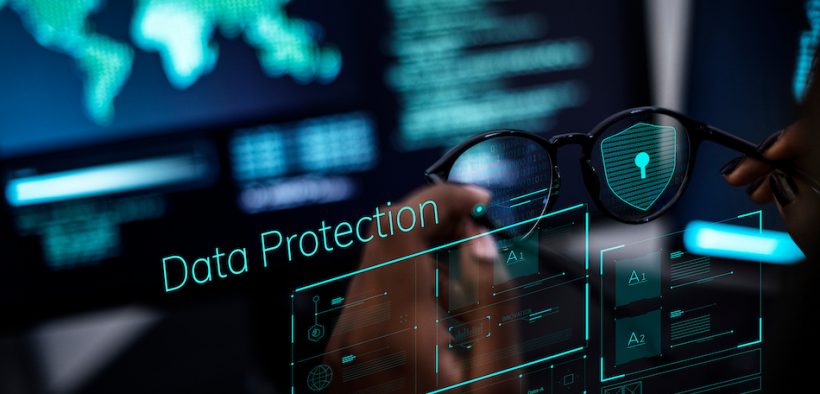The Top Three Global Cyber Security Threats for 2020
Share

In the year ahead, organisations of all sizes must prepare for the unknown, so they have the flexibility to withstand unexpected, high-impact cyber security events. To take advantage of emerging trends in both technology and cyberspace, businesses need to manage risks in ways beyond those traditionally handled by the information security function, since new attacks will impact both shareholder value and business reputation.
After reviewing the current threat landscape, there are three dominant security threats that businesses need to prepare for in 2020. These include, but are not limited to:
- The Race for Technology Dominance
- Third Parties, Internet of Things (IoT) and the Cloud
- Cybercrime
Each of these areas is covered further below:
The Race for Technology Dominance – Trade and Government
Technology has changed the world in which we live. Old norms are changing, and the next industrial revolution will be entirely technology driven and technology dependent. In short, technology will enable innovative digital business models and society will be critically dependent on technology to function. Intellectual property will be targeted as the battle for dominance rages.
“The ensuing knee jerk reaction of a global retreat into protectionism, increased trade tariffs and embargos will dramatically reduce the opportunity to collaborate on the development of new technologies.”
Evidence of fracturing geopolitical relationships started to emerge in 2018 demonstrated by the US and China trade war and the UK Brexit. In 2020, the US and China will increase restrictions and protectionist measures in pursuit of technology leadership leading to a heightened digital cold war in which data is the prize. This race to develop strategically important next generation technology will drive an intense nation-state backed increase in espionage. The ensuing knee jerk reaction of a global retreat into protectionism, increased trade tariffs and embargos will dramatically reduce the opportunity to collaborate on the development of new technologies. The UK’s exclusion from the EU Galileo satellite system, as a result of the anticipated Brexit, is one example.
New regulations and international agreements will not be able to fully address the issues powered by advances in technology and their impact on society. Regulatory tit for tat battles will manifest across nation states and, rather than encourage innovation, is likely to stifle and constrain new developments, pushing up costs and increasing the complexity of trade for multinational businesses.
Third Parties, IoT and the Cloud – The Emerging Threat Landscape
A complex interconnection of digitally connected devices and superfast networks will prove to be a security concern as modern life becomes entirely dependent on technology. Highly sophisticated and extended supply chains present new risks to corporate data as it is necessarily shared with third party providers. IoT devices are often part of a wider implementation that is key to the overall functionality.
“The threat from malicious insider activity is an increasing concern, especially for financial institutions, and will continue to be so in 2020.”
Few devices exist in isolation, and it is the internet component of the IoT that reflects that dependency. For a home or commercial office to be truly ‘smart’, multiple devices need to work in cooperation. For a factory to be ‘smart’, multiple devices need to operate and function as an intelligent whole. However, this interconnectivity presents several security challenges, not least in the overlap of consumer and operational/industrial technology.
Finally, since so much of our critical data is now held in the cloud, opening an opportunity for cyber criminals and nation states to sabotage the cloud, aiming to disrupt economies and take down critical infrastructure through physical attacks and operating vulnerabilities across the supply chain.
Cybercrime – Criminals, Nation States and the Insider
Criminal organisations have a massive resource pool available to them and there is evidence that nation states are outsourcing as a means of establishing deniability. Nation states have fought for supremacy throughout history, and more recently, this has involved targeted espionage on nuclear, space, information and now smart technology. Industrial espionage is not new and commercial organisations developing strategically important technologies will be systematically targeted as national and commercial interests blur. Targeted organisations should expect to see sustained and well-funded attacks involving a range of techniques such as zero-day exploits, DDoS attacks and advanced persistent threats.
Additionally, the insider threat is one of the greatest drivers of security risks that organisations face as a malicious insider utilises credentials to gain access to a given organisation’s critical assets. Many organisations are challenged to detect internal nefarious acts, often due to limited access controls and the ability to detect unusual activity once someone is already inside their network. The threat from malicious insider activity is an increasing concern, especially for financial institutions, and will continue to be so in 2020.
Avoid Getting Left Behind
Today, the stakes are higher than ever before, and we’re not just talking about personal information and identity theft anymore. High level corporate secrets and critical infrastructure are constantly under attack and organisations need to be aware of the emerging threats that have shifted in the past year, as well as those that they should prepare for in the coming year.
By adopting a realistic, broad-based, collaborative approach to cyber-security and resilience, government departments, regulators, senior business managers and information security professionals will be better able to understand the true nature of cyber-threats and respond quickly and appropriately. This will be of the highest importance in 2020 and beyond.
About the Author
Steve Durbin is Managing Director of the Information Security Forum (ISF). His main areas of focus include strategy, information technology, cyber security, digitalisation and the emerging security threat landscape across both the corporate and personal environments. Previously, he was senior vice president at Gartner.


























